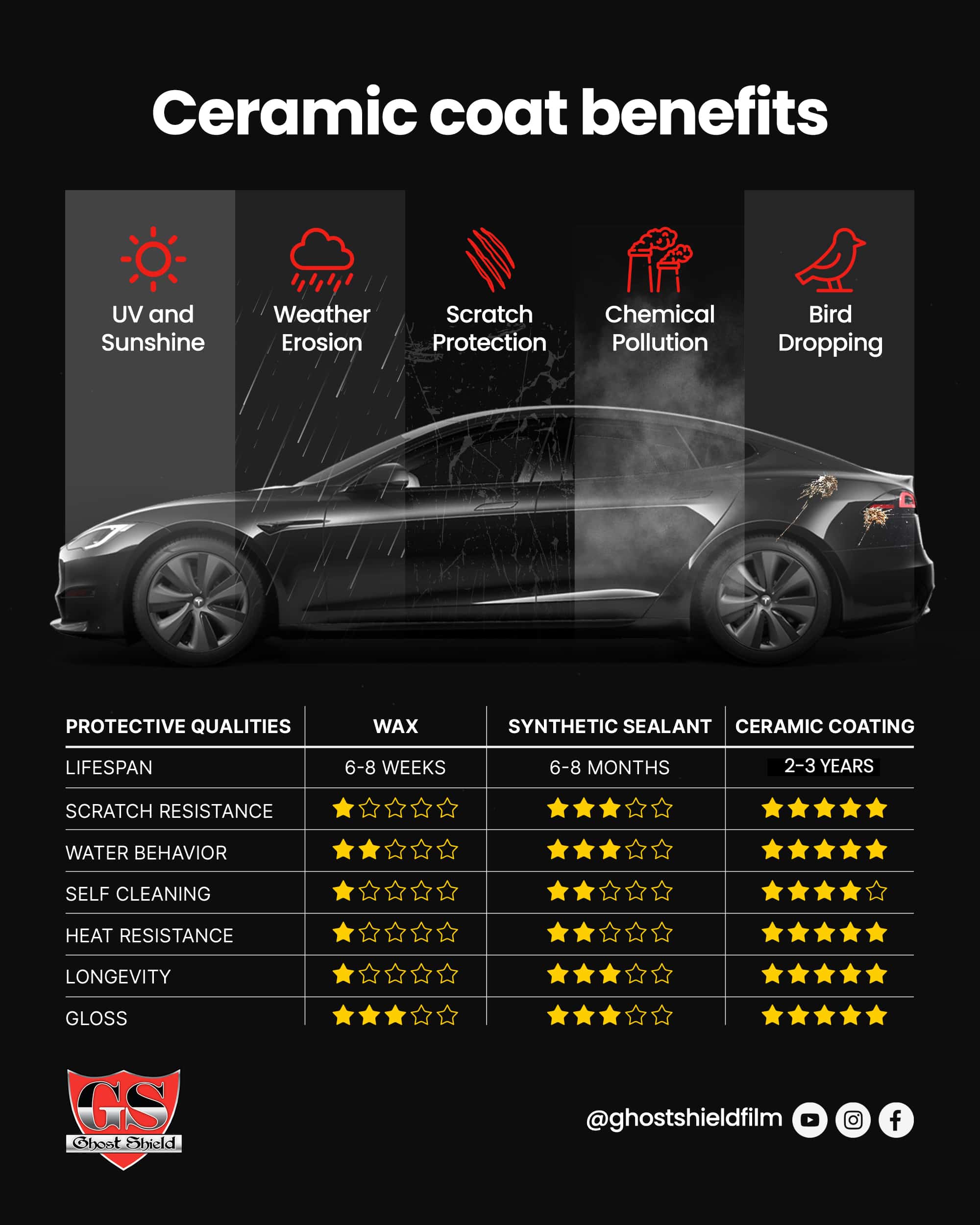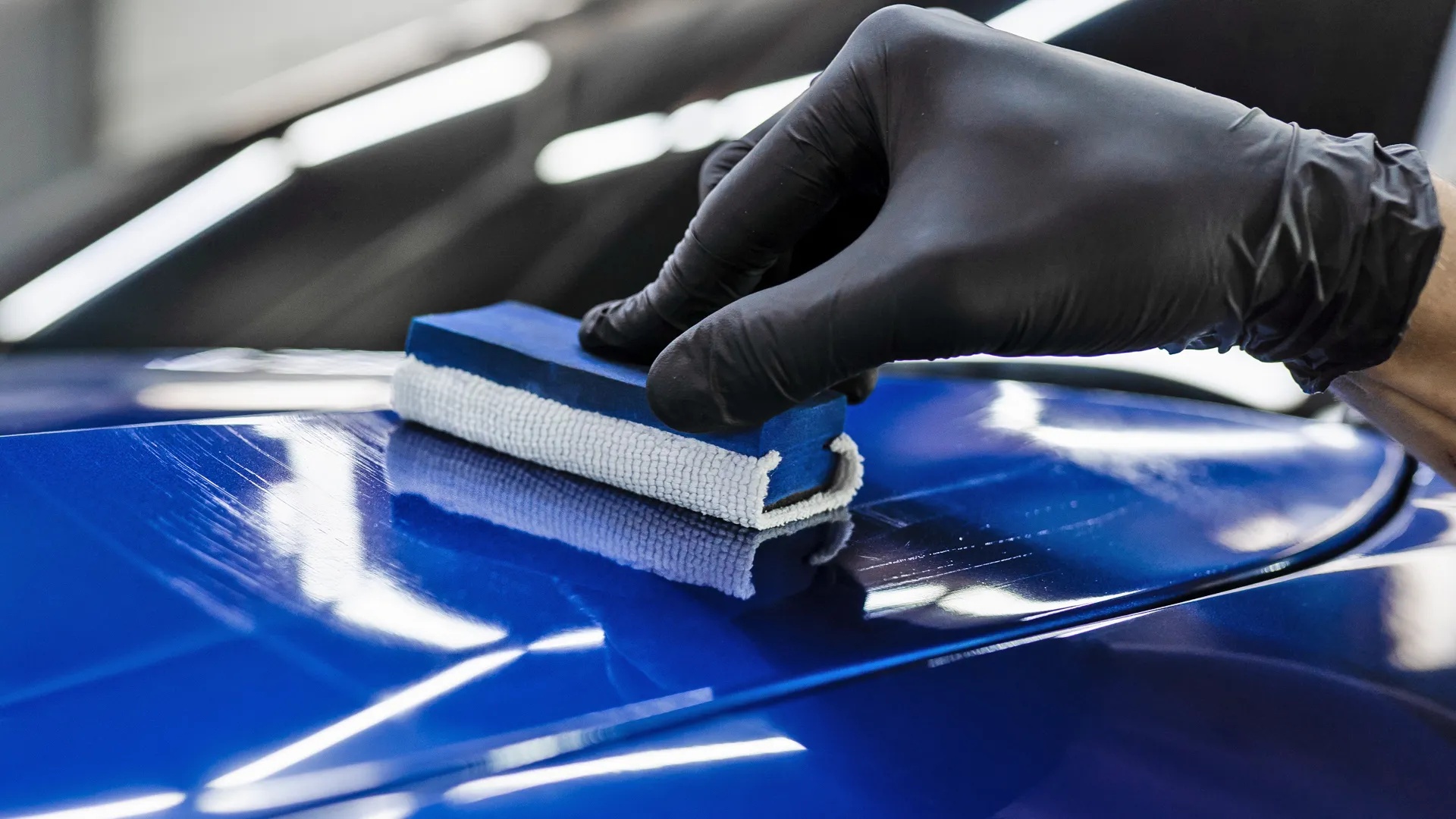How to Apply Ceramic Coating and Achieve Professional Results
How to Apply Ceramic Coating and Achieve Professional Results
Blog Article
Ceramic Coating vs. Conventional Wax: Which Supplies Better Long-Term Security?
The argument in between ceramic finishes and standard wax for car protection has gathered significant attention amongst automotive enthusiasts and experts alike. While both satisfy of securing paint, their differences in durability, application, and lasting upkeep costs may influence a consumer's option. Ceramic finishes flaunt exceptional long life and resistance to ecological variables, yet the complexity of their application questions concerning ease of access and usefulness. As we explore these contrasting alternatives, it becomes vital to think about not only the prompt advantages however likewise the ramifications for vehicle treatment gradually.
Summary of Ceramic Finish
Ceramic finishing has actually gained substantial appeal amongst automobile enthusiasts and detailers alike as a result of its innovative protective high qualities. This innovative technology is developed to create a sturdy, hydrophobic shield over an automobile's paint surface area, dramatically improving its resistance to ecological contaminants such as dirt, UV rays, and chemical discolorations. Unlike conventional wax, which supplies a short-lived layer of defense, ceramic layers bond at a molecular level with the paint, using long-lasting durability-- usually prolonging past 2 years with correct upkeep.
The application process includes thorough prep work of the vehicle's surface, consisting of cleansing and brightening to ensure optimum attachment. Once applied, the finish cures to develop a robust layer that not only adds depth and gloss to the paint however additionally simplifies upkeep. With its hydrophobic properties, ceramic covering enables water and dirt to glide off more quickly, minimizing the frequency of washes and lessening the threat of swirl marks.
In addition, ceramic coatings are available in numerous formulas, permitting users to choose products customized to their details demands and choices. Overall, ceramic finish stands for a substantial development in paint security technology, delivering premium performance contrasted to standard choices.
Summary of Traditional Wax
Commonly related to as a staple in vehicle care, wax acts as a preferred selection for those looking for a straightforward method to boost and shield their lorry's paint - ceramic coating. Automotive wax generally makes up natural components, such as carnauba, or synthetic compounds, developed to produce a protective layer externally of the paint. This layer not just boosts the lorry's gloss and shine but additionally gives a barrier against environmental impurities
The application of wax is usually user-friendly, making it obtainable for both professionals and DIY lovers. As soon as applied, wax needs a healing duration, after which it hardens to develop a safety shell.
Nevertheless, while wax is efficient for improving the aesthetic allure of a car, it is crucial to keep in mind that the protection it provides may require extra frequent reapplication compared to alternative products, such as ceramic layers. In general, standard wax continues to be a popular choice for those focusing on convenience of use and instant aesthetic renovation.
Resilience and Long Life Contrast
While both ceramic coatings and conventional wax offer protective advantages for vehicle paint, their durability and longevity vary significantly. Typical wax, typically made from all-natural carnauba or synthetic polymers, normally provides a safety layer that lasts around three to 6 months. This relatively short lifespan demands regular reapplication to preserve optimum protection.
In comparison, ceramic finishes are crafted from advanced nanotechnology, developing a covalent bond with the paint surface. This results in a robust, hydrophobic layer that can sustain for 2 to five years, depending upon the product and ecological problems. The exceptional sturdiness of ceramic finishes is associated to their chemical framework, which uses improved resistance to scrapes, UV rays, and oxidation.

Defense Versus Ecological Aspects
Safeguarding a vehicle's paint from ecological aspects is crucial for preserving its appearance and value in time. Autos are continuously revealed to a variety of elements, consisting of UV rays, bird droppings, tree sap, acid rain, and road grime, every one of which can endanger the integrity of the paintwork.
Ceramic finishes give a durable defense versus these environmental aggressors. Unlike typical wax, which can deteriorate promptly under UV exposure, ceramic finishes create a durable, hydrophobic layer that withstands the harmful impacts of sunshine and environmental pollutants. This sophisticated technology develops a chemical bond with the car's surface, supplying exceptional defense that lasts for many years, also in harsh conditions.
Typical wax, while easier to use, generally needs regular reapplication and offers limited resistance to pollutants and UV rays. Gradually, it can damage down, leaving the paint vulnerable to scratches and oxidation. On the other hand, ceramic layers keep their protective qualities longer, significantly reducing the risk of paint damages and making sure that the automobile maintains its visual charm. Consequently, ceramic helpful hints finishes are progressively recognized as the premium choice for long-lasting defense versus environmental factors.
Application and Upkeep Differences
The techniques of application and subsequent upkeep for ceramic finishes and conventional wax differ dramatically, affecting the overall customer experience and performance of each item. Ceramic finishes call for an even more detailed application procedure, generally entailing surface area prep work that consists of cleaning, decontaminating, and brightening the car. Once the surface area prepares, the ceramic covering is used in a controlled environment, often requiring expert competence to guarantee proper healing and bonding to the paint.

While both products enhance car appearance, the longer-lasting security offered by ceramic finishes might warrant their first financial investment, regardless of the even more requiring application procedure. Alternatively, typical wax remains a popular choice for those seeking a simpler, albeit temporary, solution.

Verdict
In final thought, ceramic layers demonstrate significant advantages over traditional wax in terms of toughness and environmental management. With a life expectancy extending 2 to 5 years and remarkable resistance to UV rays, dirt, and chemical stains, ceramic finishes supply a much more effective option for long-term automobile upkeep. Although the application procedure might require specialist expertise, the resulting expense financial savings and minimized regularity of reapplication underscore the worth of ceramic layers for those seeking ideal lorry protection.
The debate in between ceramic coverings and typical wax for automobile protection has amassed significant interest amongst automobile fanatics and experts alike. Unlike traditional wax, which gives a momentary layer of protection, ceramic layers bond at a molecular level with the paint, offering resilient resilience-- frequently expanding past two years with proper upkeep.
While both ceramic coverings and traditional wax deal safety advantages for auto paint, their durability and longevity vary considerably. For automobile fanatics seeking long-lasting defense, ceramic sites coverings offer a compelling benefit over conventional wax items.
In conclusion, ceramic finishes show significant advantages over standard wax in terms of durability and environmental defense.
Report this page